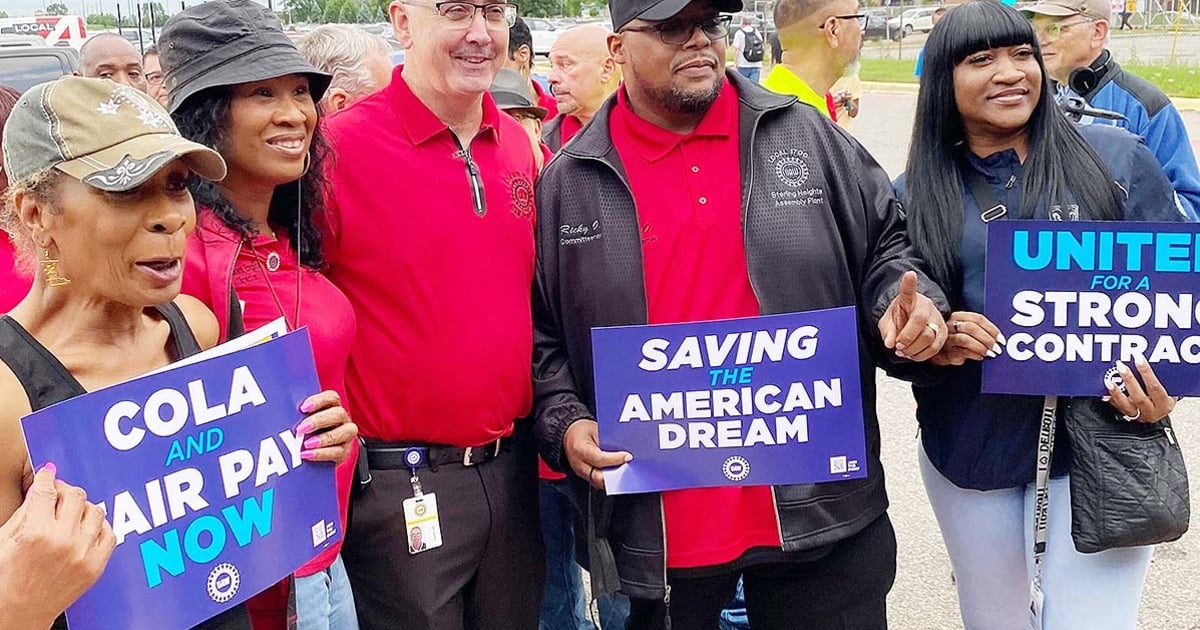
The automotive industry has long been central to a strong North American middle class. That positioning is about to face a major test as the Detroit 3 begin negotiations with the UAW in the U.S. and Unifor in Canada.
Negotiations will be led by a variety of personalities — some with little or no bargaining experience and others who will strive to fix decades of inequity in one shot.
These negotiations will show the true colors of union leaders.
Both the UAW and Unifor have new leadership, with the UAW electing Shawn Fain as president in March and Unifor electing Lana Payne as president in August 2022.
Fain was elected as a member of the UAW Members United reform group and has promised a more militant approach to negotiations, definitively declaring that he will end two-tier wages, reintroduce cost of living adjustments, win significant increases for current retirees and eliminate alternative work schedules.
Two-tier wages were first bargained by the UAW with Delphi in 2003. Wages and benefits were cut by $10 an hour, amounting to concessions of 30 to 40 percent. This trend flowed through the auto parts industry and quickly made its way into Detroit 3 bargaining on both sides of the border. The cancer that was caused still exists today.
Are we entering an opportunity to correct this wrong or simply listening to populist sloganeering from a newly elected union president?
Populist slogans are nothing new and know no political affiliation, but if you’re going to talk that way, you better deliver.
Promises made but not kept during collective bargaining will be analyzed and criticized by those who are currently your biggest cheerleaders.
While we wait to see how the negotiations unfold and whether the likely strike materializes, here’s what I can tell you from experience:
- First, there are experienced negotiators on both sides of the border.
The most seasoned negotiator for the UAW is Chuck Browning, the current vice president originally from the shop floor at Ford Motor Co. For Unifor, Shane Wark, the assistant to the president and originally from Ford, will be heavily relied on as the senior officer with the most collective bargaining experience and knowledge of the industry.
The UAW has staff department heads who will lead bargaining with the respective companies. Unifor has rank-and-file leaders to head up bargaining with their employers with energy and determination that can only be attained through shop floor and bargaining experience.
- Second, the macro environment has shifted.
The Detroit 3 have fewer tools in their arsenal than they did in 2003 or even when they last negotiated a deal following a 40-day strike in 2019. Previously, companies used contract negotiations to whipsaw U.S. workers against Canadian workers. There was also always the thinly veiled threat of moving auto jobs to Mexico, where labor standards were much looser.
The USMCA began to fix this mess. I was honored to be a part of the Canadian labor negotiation team and was locked in Ottawa for the critical last 72 hours as the deal was finalized.
During those last three days, the sticking point, and the issue I would not back down on, was automotive. When I buried my feet in cement, I purposefully left myself no wiggle room.
I am proud that now, under the new free trade agreement, 40 to 45 percent of auto parts must be made by workers earning at least $16 an hour, and 75 percent of the content must be North American, up from 62.5 percent. These provisions will save Canadian and American jobs and rob the Detroit 3 of one of the most powerful levers they had.
So, what does success look like heading into the upcoming negotiations?
To me, it looks like the elimination of the two-tiered wage system, the reintroduction of cost-of-living adjustments, significant pension increases for current retirees, and the elimination of alternative work schedules. While this might seem like a lot to ask for, I want to remind readers of two things.
First, auto workers deserve it. Second, the Detroit 3 can afford it.
GM profited almost $10 billion in 2022 and Stellantis’ profits jumped 26 percent to a staggering $18 billion. Profits for all of the Detroit 3 remained strong through the first six months of 2023 — GM, Ford and Stellantis generated a combined $20.6 billion in net income over the period, as Automotive News reported here.
Shrewd negotiators will often manage expectations, but in this case wiggle room cannot be accepted. In 2020, bargaining in Canada included the reopening of the GM plant in Oshawa and new electric vehicle production for Ford in Oakville to avoid a complete closure. These were hills to die on.
The fact is that these companies can afford to properly compensate workers and treat them with respect; now all that’s left to do is go out and fight for it. And that is a hill worth dying on.
Jerry Dias is the retired president of Unifor, the largest private-sector union in Canada.